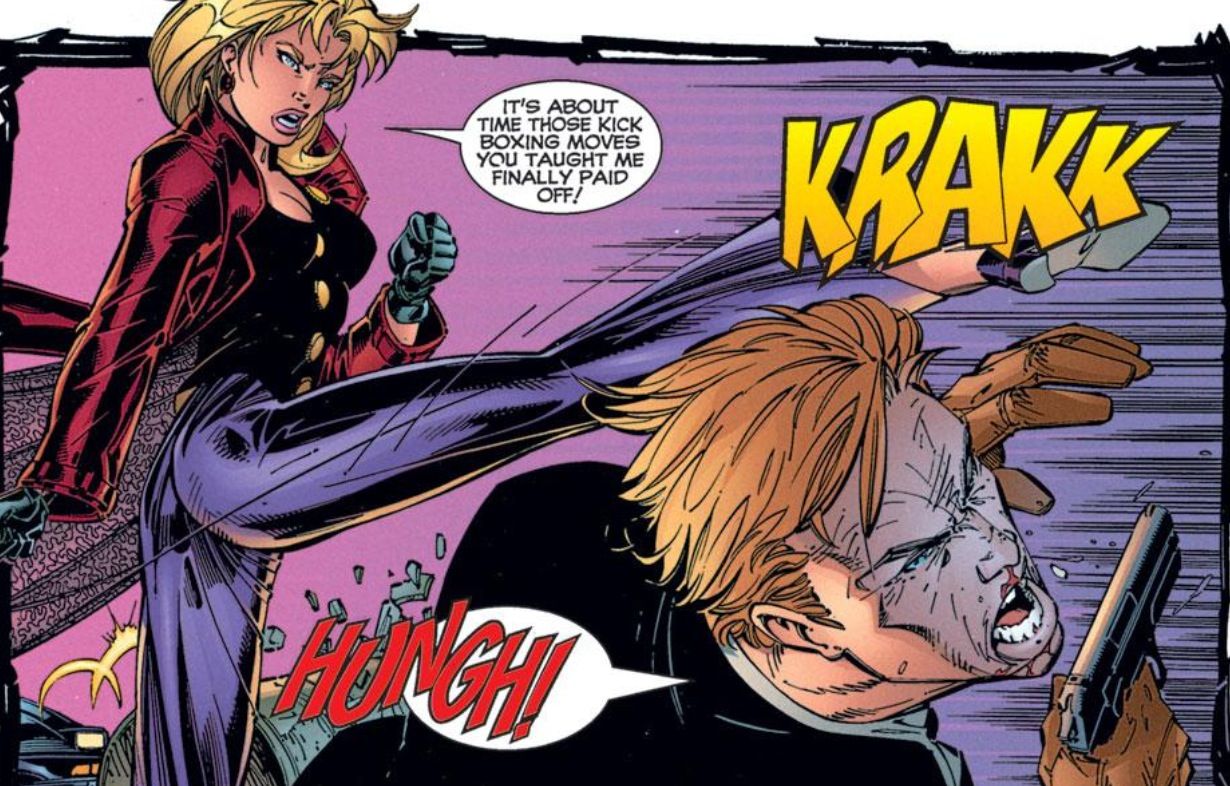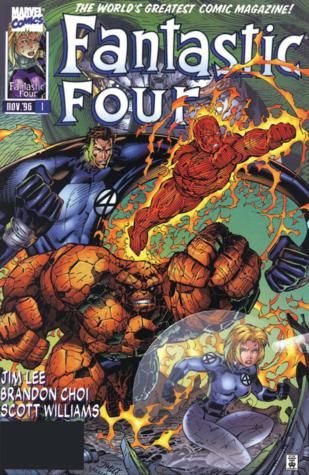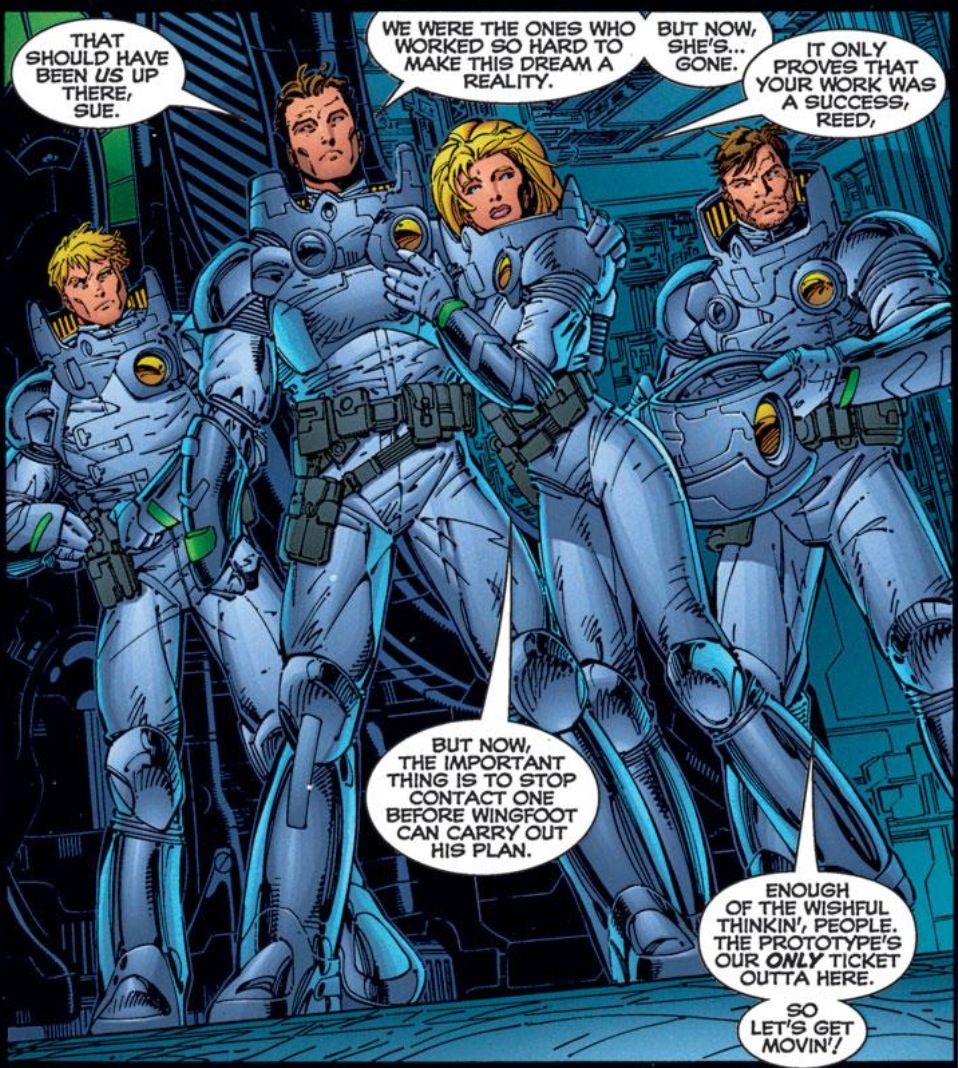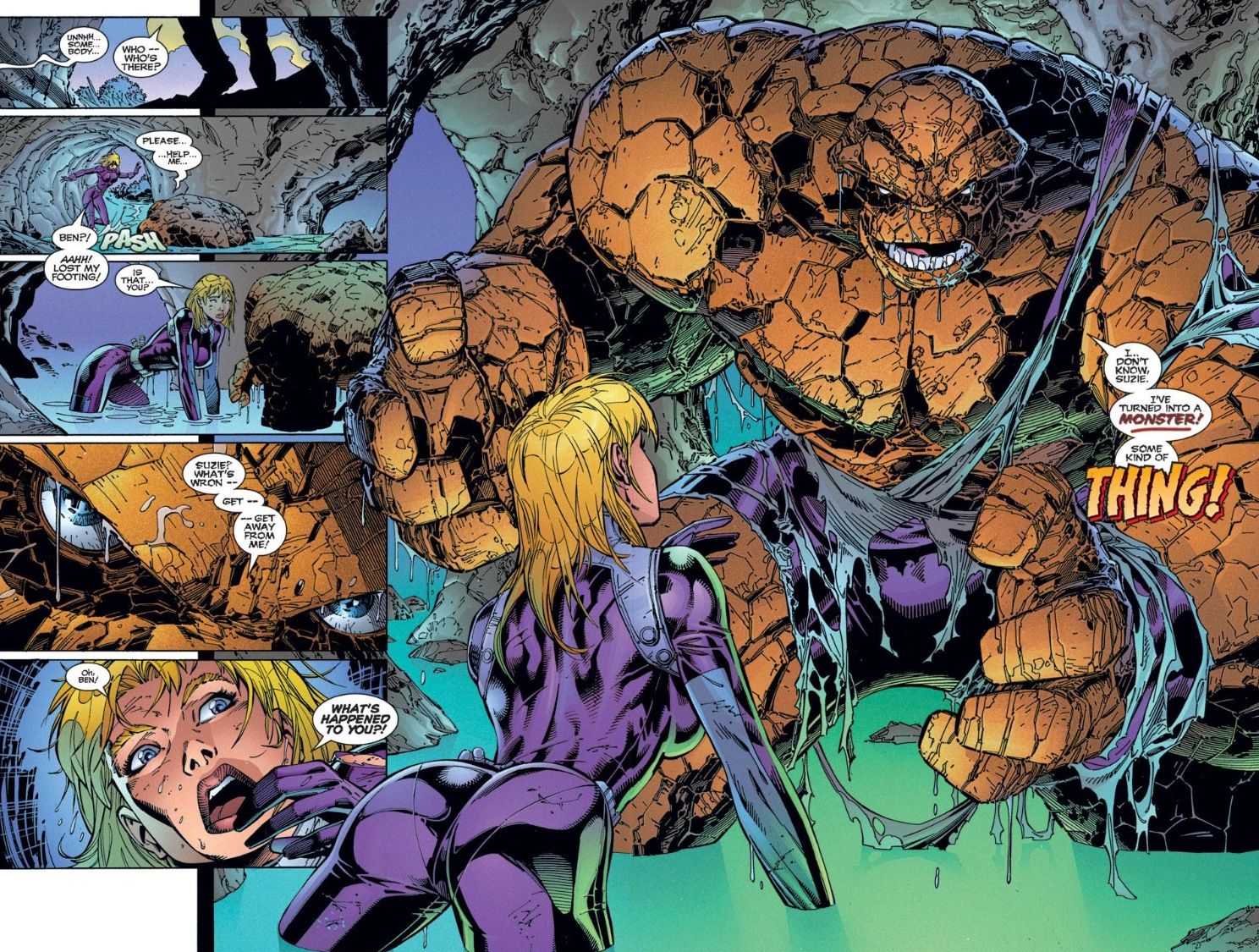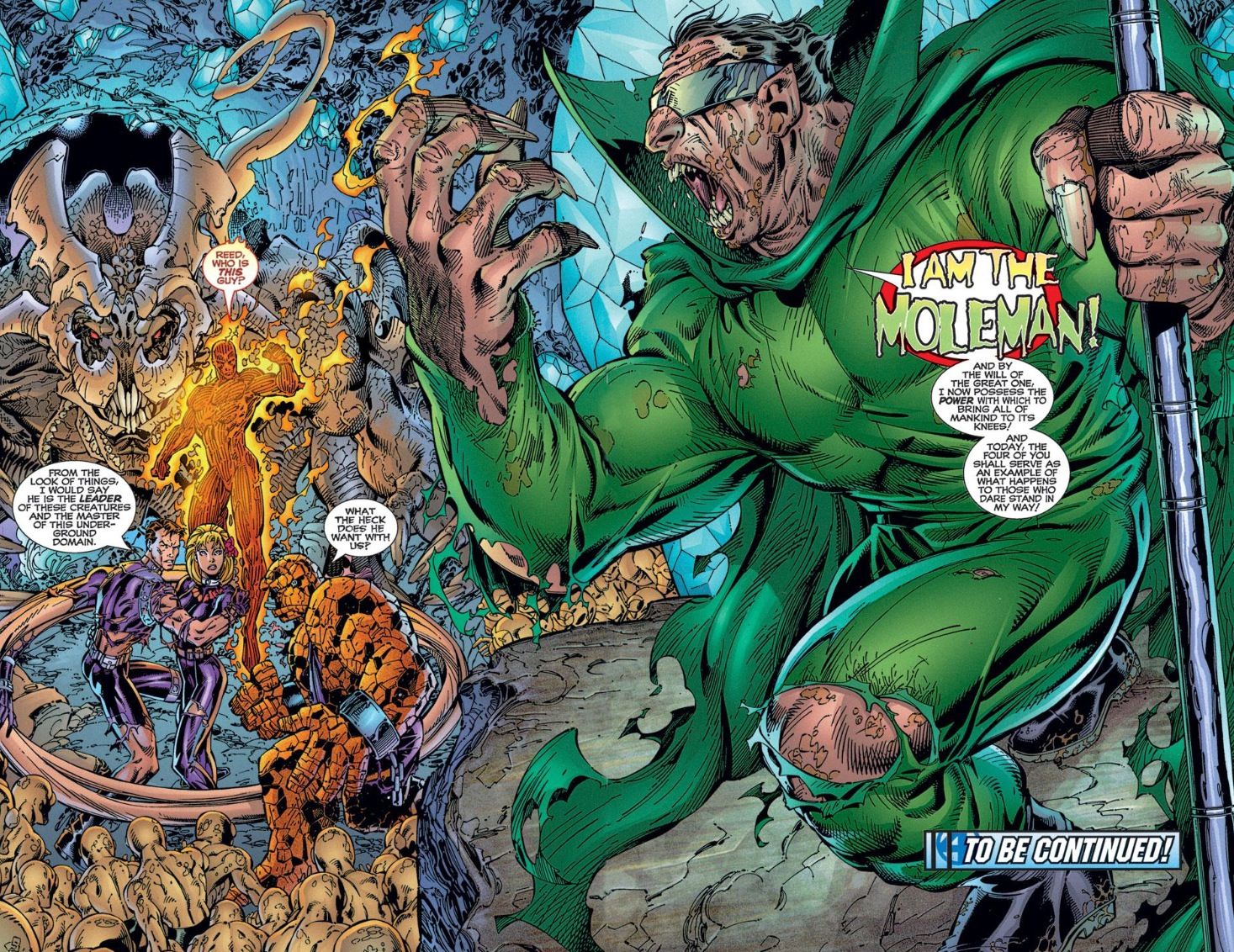In this column, Mark Ginocchio (from Chasing Amazing) takes a look at the gimmick covers from the 1990s and gives his take on whether the comic in question was just a gimmick or whether the comic within the gimmick cover was good. Hence "Gimmick or Good?" Here is an archive of all the comics featured so far. We continue with the signed variant cover of Fantastic Four #1...
Fantastic Four #1 vol. 2 (published November 1996) – story by Jim Lee and Brandon Choi, art by Lee and Scott Williams
Since it’s that time of year where we gather together with our family, I thought the timing was right to discuss the “Heroes Reborn” relaunch of Marvel’s “first family,” the Fantastic Four. In 1996, Marvel controversially killed off the Fantastic Four, Avengers and Doctor Doom, during a battle with the villain Onslaught. Rather than leave the characters dead or resurrect them for new stories, Marvel outsourced reboots of these titles to some of their former creative “superstars” – namely Jim Lee and Rob Liefeld. The new series would feature “modern” reimaginings of the Avengers and Fantastic Four’s origin stories. To explain where these stories took place in Marvel’s establish continuity, it was later revealed that these “reborn” heroes existed in a “pocket universe.” To mark the first issue of Fantastic Four (as well as all the other “Heroes Reborn” relaunches), Marvel published a variant cover edition signed by Jim Lee!
But what about inside the comic?
This Gimmick or Good? entry is a somewhat tricky one for me, because I’m caught between two viewpoints. On one hand, there is nothing abjectly wrong with Lee and Brandon Choi’s work on Fantastic Four #1. For the most part, it’s a totally acceptable re-telling of the Fantastic Four’s origin, with some new twists that I think actually enhance the story, and a few others that are only mildly irritating in that mid-90s comic book industry kind of way. However, after reading through the first major arc of this series, I also can’t convince myself that this reboot was the least bit necessary. And considering who Marvel farmed out these classic origin stories to, it would appear that the whole “Heroes Reborn” initiative was just a cynical, sales-driven plot designed to provide vanity projects for some of the company’s former home run hitters from better financial times.
For comparisons sake, I liken “Heroes Reborn” to Marvel’s Ultimate line, which debuted a few years later. Both instances marked modern-day re-tellings of classic Silver Age stories. But there was something fresher and more inspired about what Brian Michael Bendis was doing on Ultimate Spider-Man or Mark Millar on The Ultimates that made those series feel like a worthwhile diversion from the “mainstream” Marvel universe. With Lee and Choi’s Fantastic Four #1, I find myself thinking, “if I wanted to read Reed, Sue, Ben and Johnny’s origin story, I would just pick one of the 900 or so freely available reprints of Stan Lee and Jack Kirby’s original story.”
Any characterization tweaks deployed by Lee and Choi come across as being nuanced and risk-averse. So now Ben Grimm is a Persian Gulf War vet rather than a Cold War era U.S. Marines Corps test pilot. Johnny is his usual brash self, but now he’s got the money to back it up. Reed is ever the egghead, though his simple “I want to go to Mars” declarations from the Lee/Kirby comics have evolved into him wanting to explore interstellar anomalies of the galaxy.
I think the character who has changed the most (and arguably for the better) is Sue. She is no longer the damsel in distress, finding herself kidnapped by Namor or Doom, and she even uses a little “kick boxing” she picked up at the gym to take down a S.H.I.E.L.D. agent.
Now, I can’t give too much credit to Lee and Choi here. Over the course of the original series, various creative teams made an effort to strengthen Sue’s character, even changing her name from Invisible “Girl” to “Woman.” But it’s still nice to see Sue kicking some keister right out of the gate, even before she gets her super powers. Still, in traditional 90s fashion, Lee and Scott Williams illustrate Sue with a little more “sex appeal.” It’s a little odd for me to see Sue with such a tiny waist and largely proportioned chest and butt. Granted subsequents artist have illustrated Sue this way, and she was portrayed by former FHM “Sexiest Woman in the World,” Jessica Alba in both movies, but I’ve always held the idea that Sue’s “appeal” in the Lee/Kirby days was her girl next door beauty – not … whatever it is we have here.
Oh, and apropos of nothing, but Mole Man is totally jacked in this comic. That looks weird to me.
As for Lee and Choi’s script, again, there’s nothing terrible about it, but like a lot of stories that Lee plotted in the 90s, all of the dialogue comes across as stilted and weighed down with too much technical mumbo jumbo about secret launch codes and S.H.I.E.L.D. protocols. There just isn’t that space operatic joy of the original Lee/Kirby collaboration, and while I know I can’t hold Lee and Choi to such a high standard, it all comes back to me wondering what Marvel thought this relaunch would add to the world of comic books when this project was green lit in 1996.
Verdict: Gimmick

